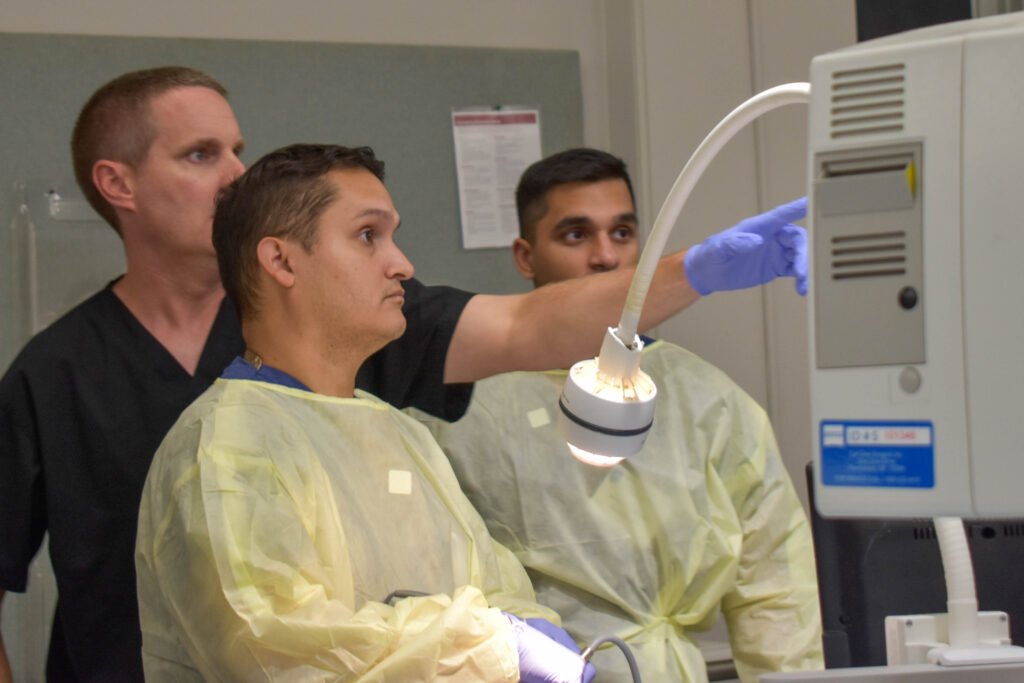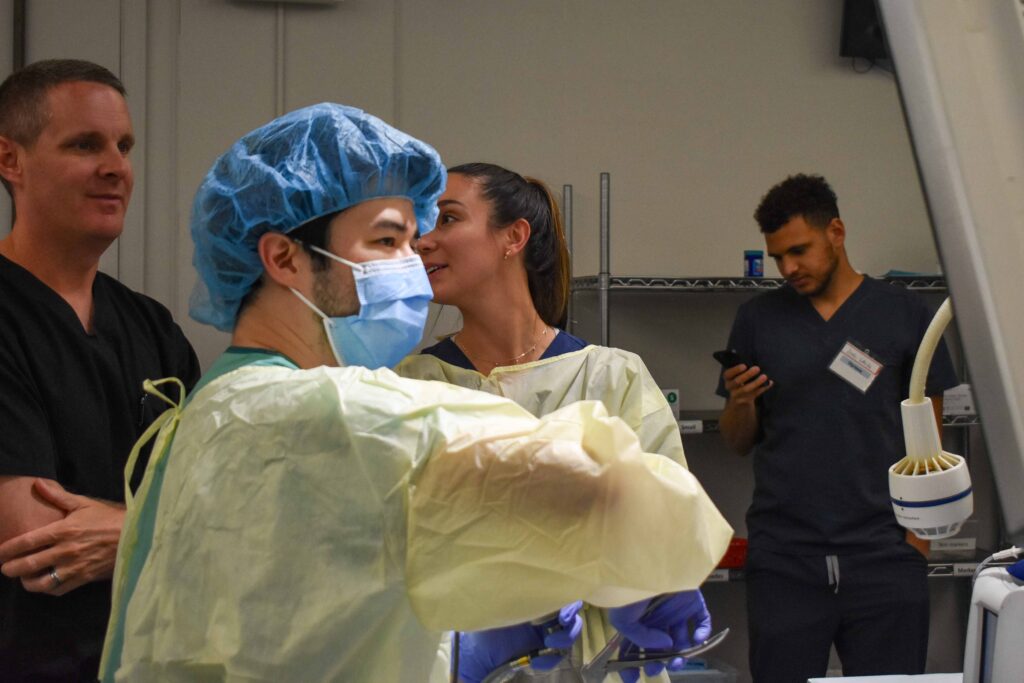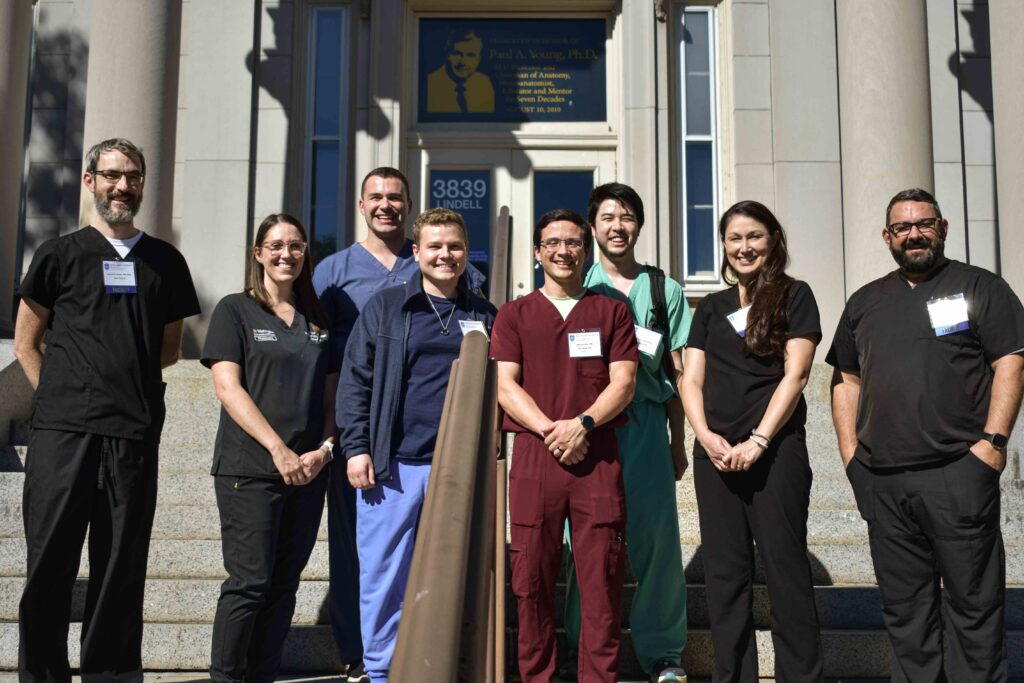An annual St. Louis surgical training course – Techniques in Endoscopic Sinus Surgery – has once again offered Midwest residents in otolaryngology an intensive hands-on workshop to further their knowledge and skill in rhinology and anterior skull base surgery.

Hosted by the Practical Anatomy and Surgical Education lab at Saint Louis University, the event, held September 7 was co-directed by Washington University rhinologist Nyssa Farrell, MD, and Joe Brunworth, MD, from SLU.
The course provided ENT residents valuable exposure to sinonasal anatomy; functional endoscopic sinus surgery; frontal sinus surgery; and skull base surgery. Provided lectures included information on medical therapy for chronic sinusitis, nasal airway obstruction, and pediatric sinus disorders.
Faculty and residents from a number of academic medical centers across the Midwest were present, including WashU rhinologists John Schneider, MD, and Lauren Roland, MD, MSCI, in addition to Farrell. WashU residents in attendance were James Bao, MD, Samuel Cler, MD, Andrew Peterson, MD, MSCI, Javier Rincon, MD, and Daniel Romano, MD.

“The course overall was a huge success,” said Farrell. “Not only did it allow residents to interact and learn from prominent rhinologists across the Midwest, it also allowed them to work with residents of other training programs and to see how techniques can vary amongst surgeons.”
For third year ENT resident Andrew Peterson, MD, the benefits of the workshop were evident.
“The sinus course was fantastic,” he said. “The high faculty-to-resident ratio allowed for a useful cadaver dissection coupled with pertinent lectures throughout the day. I feel more prepared to address complex sinus and skull base disease moving forward.”
